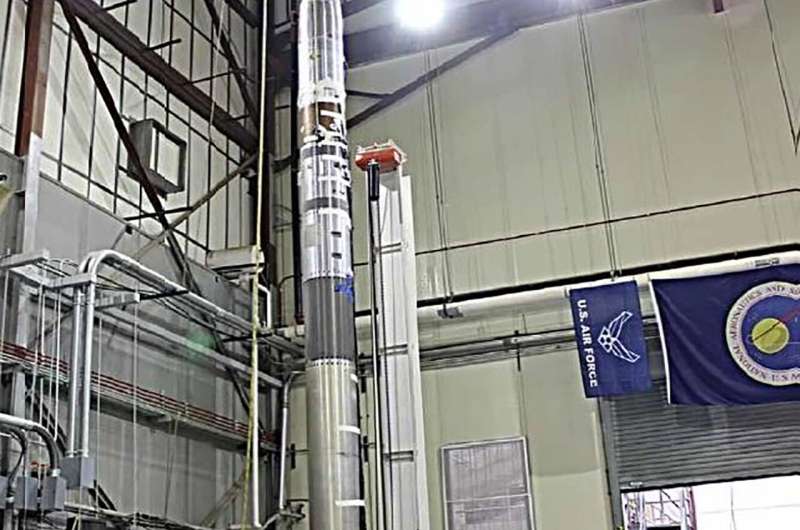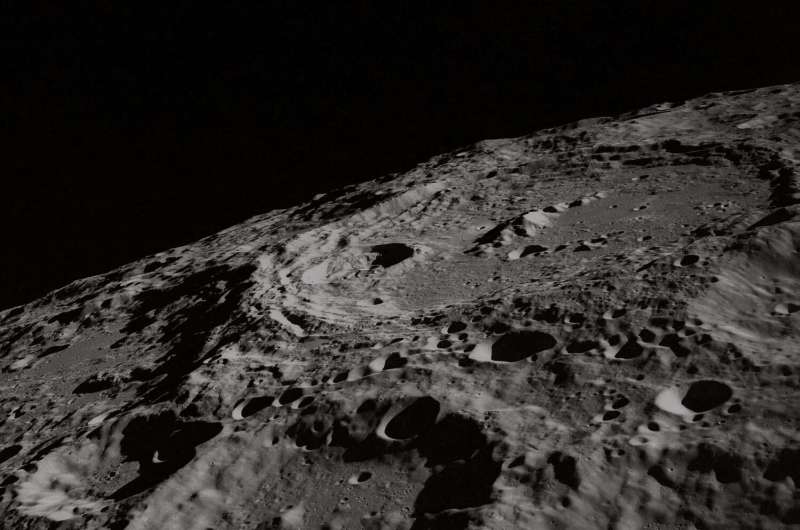Integrated Deterrence at Center of Upcoming National Defense Strategy
Sunday, 06 March 2022 08:36 With China, Russia, Iran and North Korea all pursuing advancements in their own nuclear capabilities, and both China and Russia developing advanced hypersonic weaponry and space capabilities, the United States will continue to rely on nuclear weapons as a central part of its own strategic deterrence. But there will need to be more than just nuclear weapons if the U.S. is to maintain its own secu
With China, Russia, Iran and North Korea all pursuing advancements in their own nuclear capabilities, and both China and Russia developing advanced hypersonic weaponry and space capabilities, the United States will continue to rely on nuclear weapons as a central part of its own strategic deterrence. But there will need to be more than just nuclear weapons if the U.S. is to maintain its own secu A River Runs Through It: Onward to the Delta
Sunday, 06 March 2022 08:36 The delta is calling and we must go! With one Earth year in its rearview mirror, the Perseverance rover has been racking up the odometry en route to the site of it's next science campaign. It's been a trip down memory lane since leaving Seitah on Sol 340 (Feb 2, 2022) and retracing our tracks back to the Octavia E. Butler landing site.
Familiar views and rocks greet us like old friends as
The delta is calling and we must go! With one Earth year in its rearview mirror, the Perseverance rover has been racking up the odometry en route to the site of it's next science campaign. It's been a trip down memory lane since leaving Seitah on Sol 340 (Feb 2, 2022) and retracing our tracks back to the Octavia E. Butler landing site.
Familiar views and rocks greet us like old friends as NASA begins assembly of Europa Clipper
Sunday, 06 March 2022 08:36 When it's fully assembled, NASA's Europa Clipper will be as large as an SUV with solar arrays long enough to span a basketball court - all the better to help power the spacecraft during its journey to Jupiter's icy moon Europa. And just about every detail of the spacecraft will have been hand-crafted.
The assembly effort is already underway in clean rooms at the agency's Jet Propulsion Lab
When it's fully assembled, NASA's Europa Clipper will be as large as an SUV with solar arrays long enough to span a basketball court - all the better to help power the spacecraft during its journey to Jupiter's icy moon Europa. And just about every detail of the spacecraft will have been hand-crafted.
The assembly effort is already underway in clean rooms at the agency's Jet Propulsion Lab Sols 3403-3404: Tiptoe to the Pediment
Sunday, 06 March 2022 08:36 The terrain continues to challenge us as we make our way up onto the Greenheugh pediment. Monday's drive ended sooner than expected when the rover sensed the road was rockier than anticipated, so it paused to wait for further instructions from Earth. In the mean time, we took advantage of this brief pause to 'sniff' the rock field all around us.
First, we took ChemCam and Mastcam of "Tobar
The terrain continues to challenge us as we make our way up onto the Greenheugh pediment. Monday's drive ended sooner than expected when the rover sensed the road was rockier than anticipated, so it paused to wait for further instructions from Earth. In the mean time, we took advantage of this brief pause to 'sniff' the rock field all around us.
First, we took ChemCam and Mastcam of "Tobar Selecting the right structural materials for fusion reactors
Sunday, 06 March 2022 08:36 Do two promising structural materials corrode at very high temperatures when in contact with "liquid metal fuel breeders" in fusion reactors? Researchers of Tokyo Tech, YNU and QST now have the answer. This high-temperature compatibility of reactor structural materials with the liquid breeder-a lining around the reactor core that absorbs and traps the high energy neutrons produced in the plasma
Do two promising structural materials corrode at very high temperatures when in contact with "liquid metal fuel breeders" in fusion reactors? Researchers of Tokyo Tech, YNU and QST now have the answer. This high-temperature compatibility of reactor structural materials with the liquid breeder-a lining around the reactor core that absorbs and traps the high energy neutrons produced in the plasma Using NB-IoT connectivity to boost hybrid terrestrial-satellite networks
Sunday, 06 March 2022 08:36 Alif Semiconductor, a global provider of microcontrollers and fusion processors, and IoT satellite operator OQ Technology have signed a memorandum of understanding (MOU) to collaborate on a narrowband internet-of-things (NB-IoT) solution for hybrid terrestrial satellite networking. Alifs fingertip sized, highly integrated cellular enabled IoT devices will allow users to roam freely between mobil
Alif Semiconductor, a global provider of microcontrollers and fusion processors, and IoT satellite operator OQ Technology have signed a memorandum of understanding (MOU) to collaborate on a narrowband internet-of-things (NB-IoT) solution for hybrid terrestrial satellite networking. Alifs fingertip sized, highly integrated cellular enabled IoT devices will allow users to roam freely between mobil Sidus Space teams with Aitech Systems to support LizzieSat constellation
Sunday, 06 March 2022 08:36 Sidus Space, Inc. (NASDAQ:SIDU), a Space-as-a-Service satellite company focused on commercial satellite design, manufacture, launch, and data collection is pleased to announce a strategic partnership with Aitech Systems to support LizzieSat Constellation.
Through this partnership, Aitech Systems is developing and delivering custom LizzieSat Command and Data Handling (C&DH) flight computers
Sidus Space, Inc. (NASDAQ:SIDU), a Space-as-a-Service satellite company focused on commercial satellite design, manufacture, launch, and data collection is pleased to announce a strategic partnership with Aitech Systems to support LizzieSat Constellation.
Through this partnership, Aitech Systems is developing and delivering custom LizzieSat Command and Data Handling (C&DH) flight computers Microscopic view on asteroid collisions could help us understand planet formation
Sunday, 06 March 2022 08:36 A new way of dating collisions between asteroids and planetary bodies throughout our Solar System's history could help scientists reconstruct how and when planets were born.
The research, which was led by the University of Cambridge, combined dating and microscopic analysis of the Chelyabinsk meteorite - which fell to Earth and hit Microscopic view on asteroid collisions could help us unde
A new way of dating collisions between asteroids and planetary bodies throughout our Solar System's history could help scientists reconstruct how and when planets were born.
The research, which was led by the University of Cambridge, combined dating and microscopic analysis of the Chelyabinsk meteorite - which fell to Earth and hit Microscopic view on asteroid collisions could help us unde SpaceX shifts resources to cybersecurity to address Starlink jamming
Saturday, 05 March 2022 14:17
Citing Starlink jamming “near conflict areas,” Elon Musk said March 5 that SpaceX will be "reprioritzed to cyber defense & overcoming signal jamming" at the expense of "slight delays" in Starship and Starlink V2.
The post SpaceX shifts resources to cybersecurity to address Starlink jamming appeared first on SpaceNews.
Op-ed | Ukraine Will Fight. Ukraine Will Win.
Saturday, 05 March 2022 14:16
We foresee a hard-fought victory for Ukraine opening a new chapter in our history. Space will be part of that new chapter.
The post Op-ed | Ukraine Will Fight. Ukraine Will Win. appeared first on SpaceNews.
Scientists think an old rocket just hit the Moon going 5,800 mph
Friday, 04 March 2022 22:04
Add one more crater to the long list of pockmarks on the lunar surface.
According to orbital calculations, a rocket hurtling through space for years crashed into the Moon on Friday, but the strike wasn't directly observed, and there might be a wait for photographic evidence.
The impact would have taken place at 7:25 am Eastern Time (1225 GMT), on the far side of the Moon, said the astronomer Bill Gray, who was the first to predict the collision.
Racing through the cosmos at around 5,800 mph (9,300 kph), the roughly four ton object should make a crater "10 or 20 meters across," Gray told AFP.
Its speed, trajectory, and time of impact were calculated using Earth-based telescope observations.
"We had lots (and lots) of tracking data for the object, and there is nothing acting on it except the forces of gravity and sunlight," he said, with the latter pushing the cylinder gently away from the Sun.
Space Force to reorganize its acquisition command to ‘focus on the threat’
Friday, 04 March 2022 21:56
The U.S. Space Systems Command is being restructured in an effort to re-energize the bureaucracy and bring fresh focus on the competition with China, officials said March 4.
The post Space Force to reorganize its acquisition command to ‘focus on the threat’ appeared first on SpaceNews.
NASA rocket mission to study the origin of slow solar winds
Friday, 04 March 2022 21:48
The Sun's atmosphere, or corona, is beaming with activity. Solar flares and coronal mass injections send high-energy particles out into space and the corona constantly releases particles known as the solar wind.
Just as winds on Earth vary, the solar winds departing the Sun travel at different velocities—from a mere 700,000 mph, called slow solar winds, to the fast winds travelling up to 1.7 million mph.
Solar winds interacting with the Earth's atmosphere may interfere with communications, GPS signals, and electrical energy grids.
Beginning March 7, NASA will be ready to launch an experiment called HERSCHEL, or HElium Resonance Scatter in the Corona and HELiosphere. HERSCHEL will study the origin of the slow solar wind, investigate the variation of helium abundance in the corona, and facilitate future investigation of coronal mass ejections and other solar dynamics.
Scientists help recover gases from moon rock time capsule
Friday, 04 March 2022 17:21
Scientists from Washington University in St. Louis are helping to recover gases from a container of lunar soil that astronauts collected and sealed under vacuum on the surface of the moon in 1972. The effort is part of NASA's Apollo Next Generation Sample Analysis (ANGSA) initiative.
Apollo 17 astronauts Harrison Schmitt and Eugene Cernan collected the sample from the site of an ancient landslide in the moon's Taurus-Littrow Valley. The astronauts used a coring device to dig out a column of lunar regolith—a rough mixture of dust, soil and broken rock from the surface of the moon—and sealed it in a container. Back on Earth, NASA carefully placed the container in the lunar vault at NASA's Johnson Space Center, where it has remained in pristine condition, virtually untouched until now.
"For the last 50 years, the lunar core was enclosed in a core sample vacuum container, which was then enclosed in an outer vacuum container," said Alex Meshik, a research professor of physics in Arts & Sciences and faculty fellow of the university's McDonnell Center for the Space Sciences. "They were nested together, almost like Russian dolls.
Failure to launch: War scuppers Russia-West space collaboration
Friday, 04 March 2022 15:26 Russia's invasion of Ukraine has had repercussions not just around the world but beyond it, bringing to a grinding halt joint space projects between Moscow and the West that began in the aftermath of the Cold War.
When the head of Russian space agency Roscosmos Dmitry Rogozin announced on Thursday that Russia would stop supplying the United States with rocket engines, his message was blunt:
Russia's invasion of Ukraine has had repercussions not just around the world but beyond it, bringing to a grinding halt joint space projects between Moscow and the West that began in the aftermath of the Cold War.
When the head of Russian space agency Roscosmos Dmitry Rogozin announced on Thursday that Russia would stop supplying the United States with rocket engines, his message was blunt: 